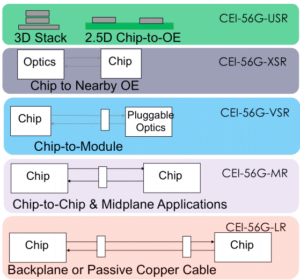Single-Pair Ethernet Cabling: Four New Applications
Four New Types of Single-Pair Ethernet Cabling
For years, Ethernet cabling has used four twisted pairs to carry data without worrying about noise in data lines. Recent developments in IEEE 802.3 (Ethernet Working Group) and TIA TR-42(Telecommunications Cabling Systems Engineering Committee) has unveiled four standards projects which may change that; instead of four balanced twisted-pairs cabling, these standards feature a single balanced twisted-pair Ethernet cabling.
Of these four, one will impact enterprise networks the most. We will cover this standard first, and then explain the three other types of single-pair Ethernet cables below.
IoT 1 Gbps Applications: 100 m Reach
A 2017 Ericsson Mobility Report says that there will be nearly 28 billion connected devices in place globally by 2021 – and more than half of these will be related to Internet of Things (IoT).
With the ability to deliver data at speeds of up to 1G, and PoE power, this standard is intended specifically for IoT applications. Known as ANSI/TIA-568.5, it will provide cable, connector, cord, link and channel specifications for single-pair connectivity in enterprise networks.
This single-pair Ethernet cable may help network professionals connect more devices to their networks as the industry moves toward digital buildings – where all types of systems and devices integrate directly with the enterprise network to capture and communicate data.
Most of the devices used in digital buildings – such as sensors – have minimal power and bandwidth requirements (in applications like building automation and alarm systems). In these cases, single-pair Ethernet cable can provide a cost-effective cabling solution. The cable is smaller and lighter than a standard four-pair Ethernet cable, so it can also reduce pathway congestion.
The three other single-pair Ethernet cable types don’t apply directly to data centers or enterprise networks, but they’re still important to understand.
Read full article




